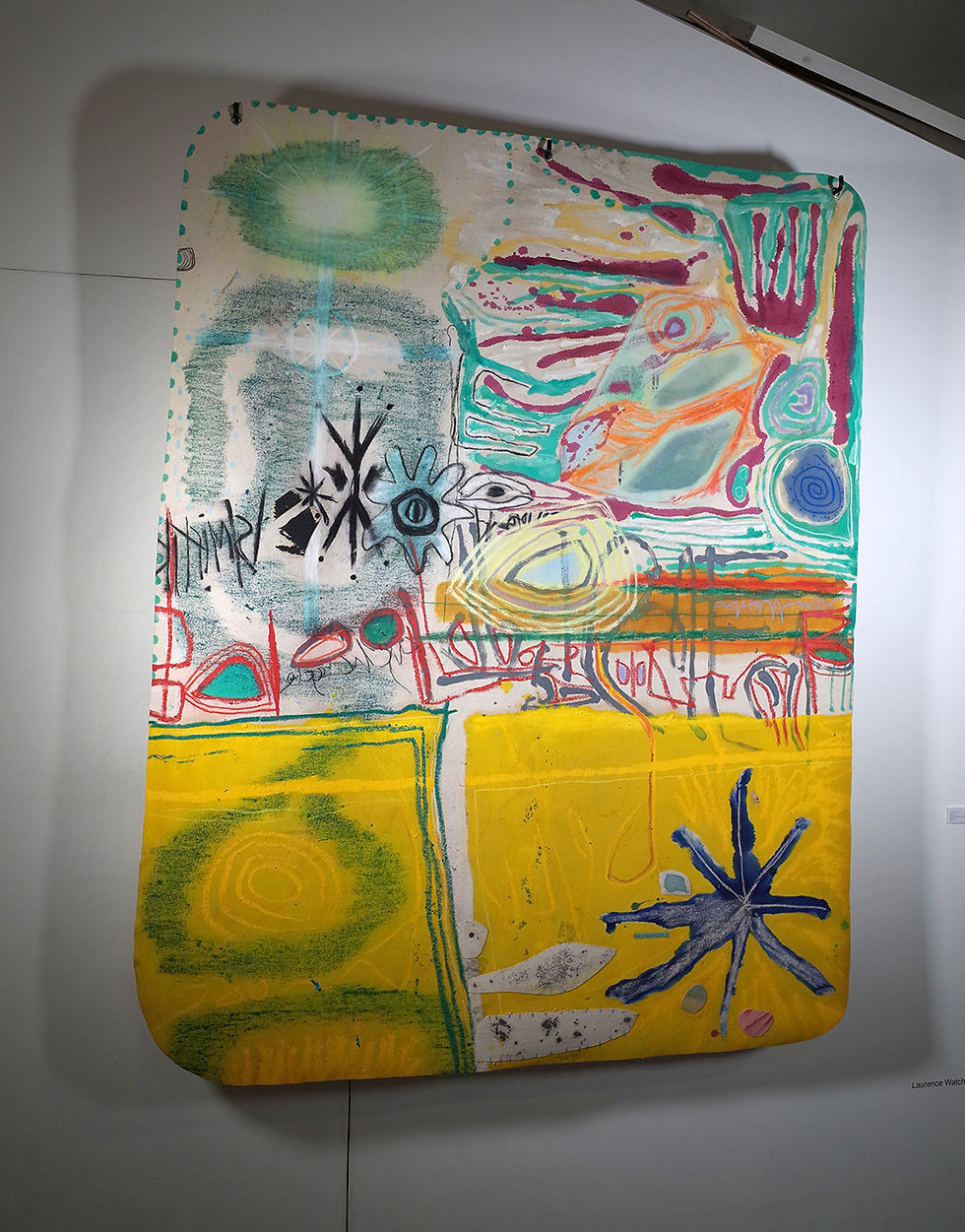Laurence Watchorn

BIOGRAPHY
Skin-like pictures made intuitively on the floor encoded with a rawness and depth beyond reason, attempt to embody rather than depict. Watchorn mindfully considers the object-hood of pictures and animates them by rounding their corners and hanging them on hooks.
It is an alchemically-spiritualising process that flows from and out of a natural order. A process of making material deeper realities, embodying convergence, unity and the bringing together of what has come apart.
Informed by elements of dance music, esotericism, shamanism, depth psychology and alternative paths to healing, organic forms are paired with automatic marks and structures as offerings to alternate modes of seeing.
An innate connection to improvised music has led the artist to map out links between the visual and sonic, and to question the potential for pictures to operate as analogues into frequential space.
'I hunt for the picture and the remnants of spirit and soul that surround me. Pigment, charcoal and cloth are transmuted into cypher-like visions through inverted perceptions with destination unknown.
'I'm interested in the allegory of a dead-end woodland stroll to discuss the act of picture-making. A reflexive, veering path leading into the unknown thick of things. Instead of an immediate confrontation with resolution, it's a path often turning back on itself which values the nature, rather than the meaning of things. The destination is thus subordinated to the present moment, with all its eventualities. An expression of humanities true place in nature - not controlling toward preconceived ends but instead allowing life, or the picture, to happen as an animistic and inconsequential element of nature's balance.'
EXHIBITIONS
2023 - 2024
The Winter Show, Group Exhibition, Whistleblower Gallery, Brighton, UK
2023
Studio Residency, The Bomb Factory South, London UK
Two-Person Show, Sim Smith - London, London, UK
'Circle', Group Exhibition, Whistleblower Gallery, Brighton, UK
2022
Studio Residency, Shaw Gallery, London, UK
'Abstract', Inaugural Show at The Bomb Factory Covent Garden, UK
'Skincrawl' Solo Show - The Bomb Factory, London, UK
Studio Residency, The Bomb Factory South, London, UK
'Dark Night of the Soul', Oneroom - London
Cass Art Painting Prize, Slade School of Art, London, UK
2020
'Savage' Exhibition - London
AVAILABLE WORK
We sometimes have other available works by Laurence Watchorn, or can accept commissions. Please get in touch if you would like to discuss.




